A Brief History of English
London area language history
from Old English to Scots English
Scottish timeline 80-1776
Germans and Scots-Irish in America
Story of English video:
Story of English video about Scots
maps from the Story of English:
early US dialect areas
Scotland
Scots migration to Ulster
Scotch-Irish migration from Ulster to the U.S.
Appalachian migration
U.S. dialect areas
migration to Canada
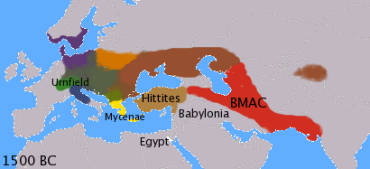
|
1500 B.C. -- The Indo-Europeans have not yet reached England. The Celts are in the area roughly between Luxembourg and Geneva. |
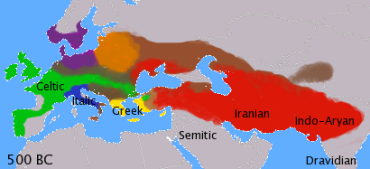
|
500 B.C. -- The Celts have brought their language (a branch of Indo-European) to England. |
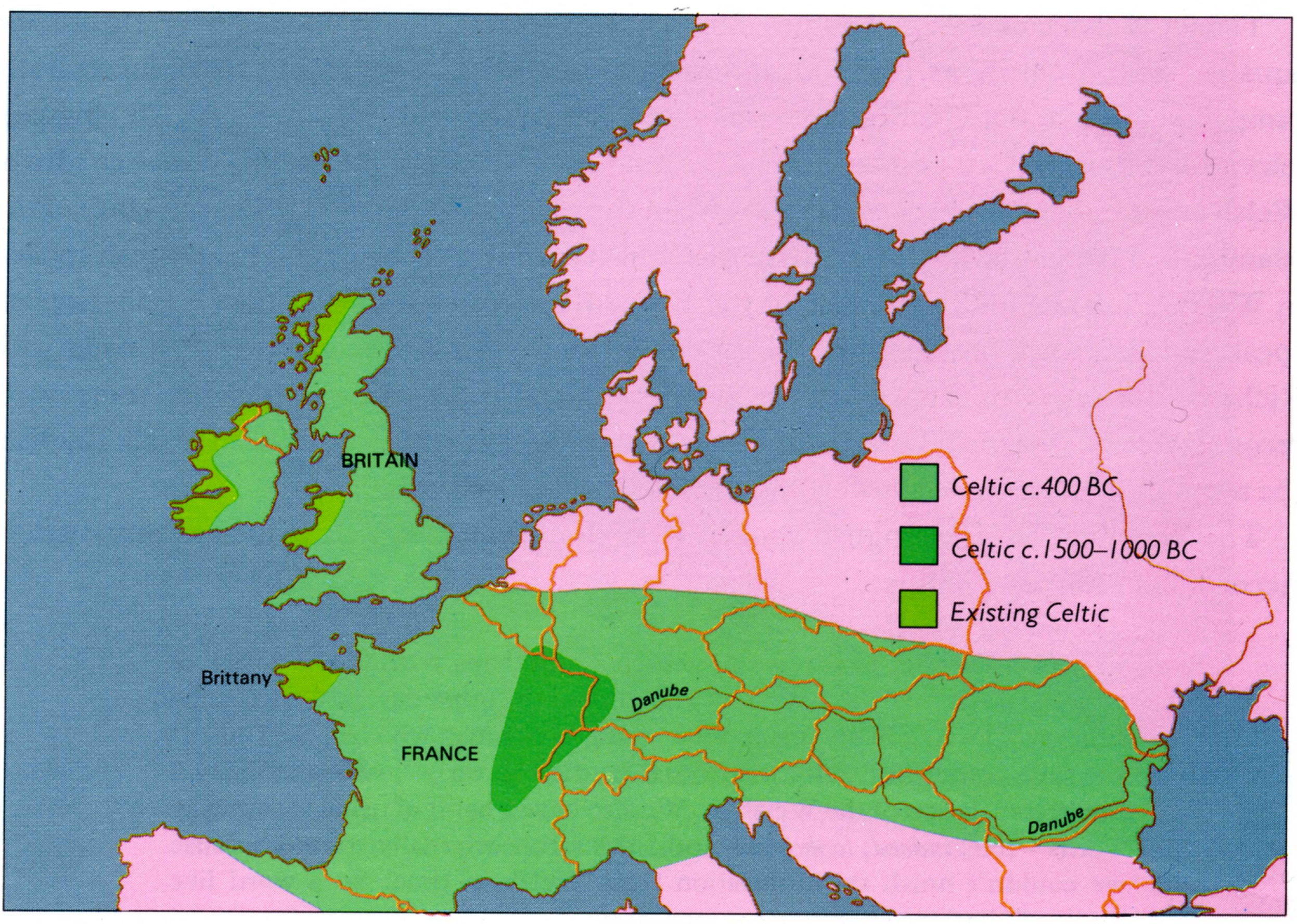
|
After their peak around 400 B.C., the Celts begin a long period of decline, which continues even today. |
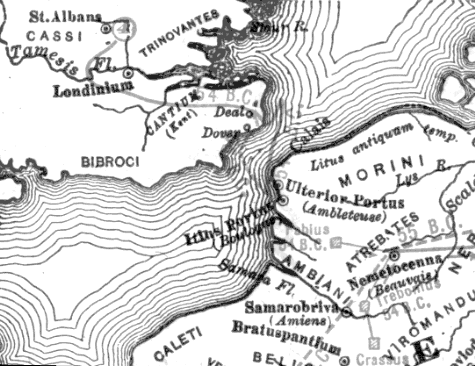
|
Julius Caesar explores southeastern England in 55 B.C. and again in 54 B.C. |
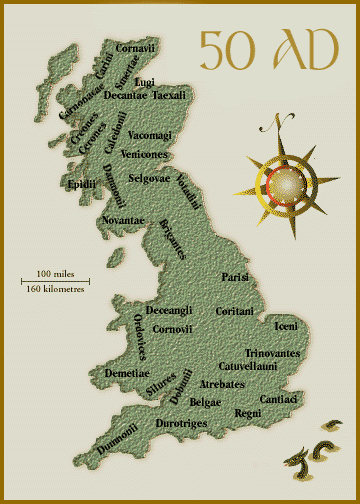
|
Rome acknowledges Cymbeline, King of the Catuvellauni (a Celtic tribe near London) as king of Britain. Later, in A.D. 43, the Romans, under Aulus Plautius, land at Richborough (Kent) for a full-scale invasion of the island. By A.D. 77, the Roman conquest of Britain was complete, and Julius Agricola served as imperial governor until A.D. 84. |
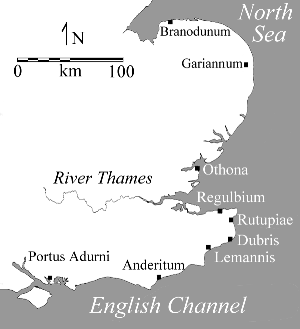
|
Around A.D. 270, the Romans begin the "Saxon Shore" fort system, a chain of coastal forts in the south and east of Britain. Later, in reponse to threats elsewhere in the Empire, the Roman legions leave Britain in 407. In 408, Romanized Celtic Brittania endures devastating attacks from the Picts, Scots, and Saxons. In 410, the Emperor Honorius of Rome tells Brittania to attend to its own affairs. Perhaps the last Roman Dux Brittanniarum, Coel Hen, dies around 420. | 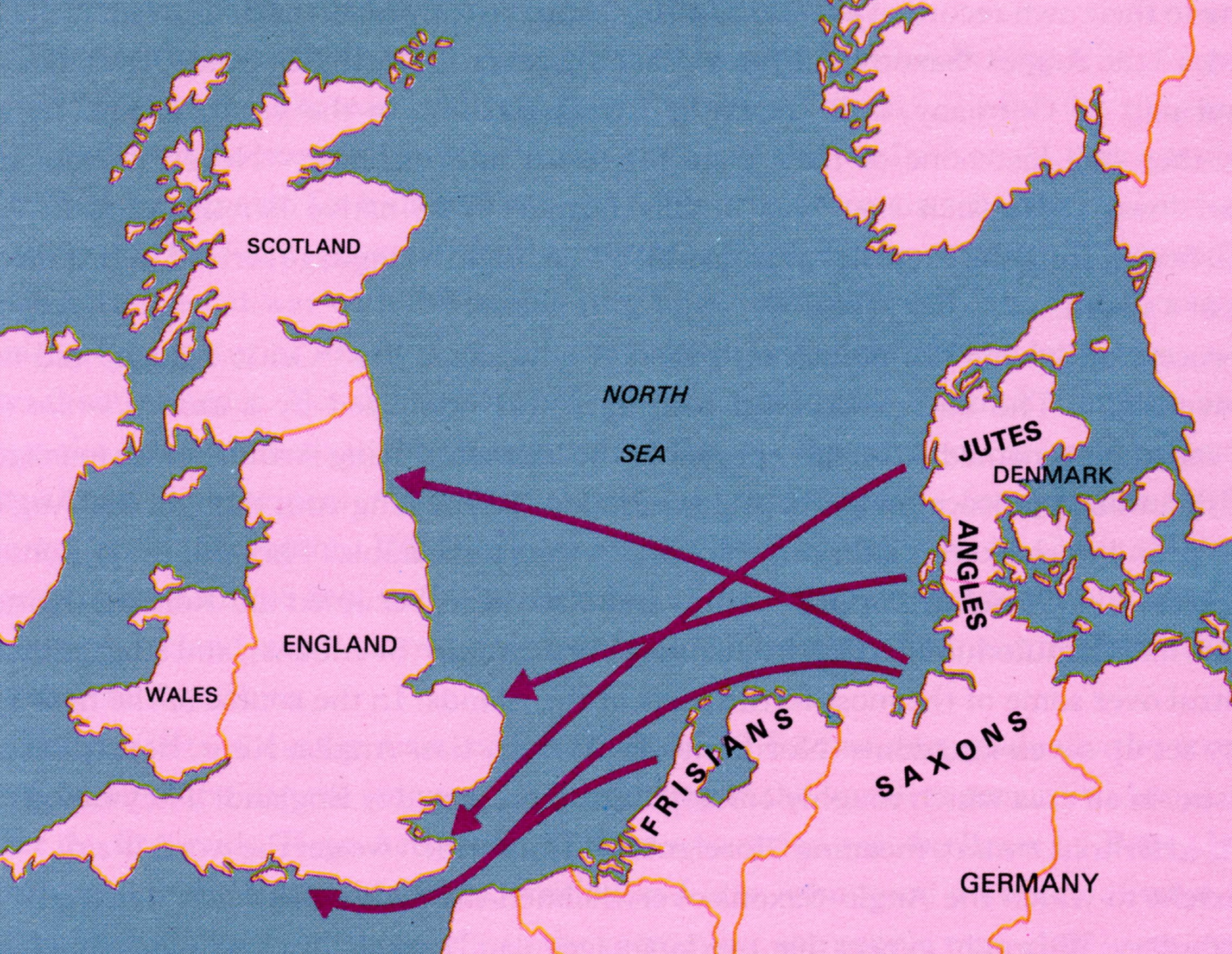
|
The Angles, Saxons, Jutes, and Frisians migrate to England from the Continent. | 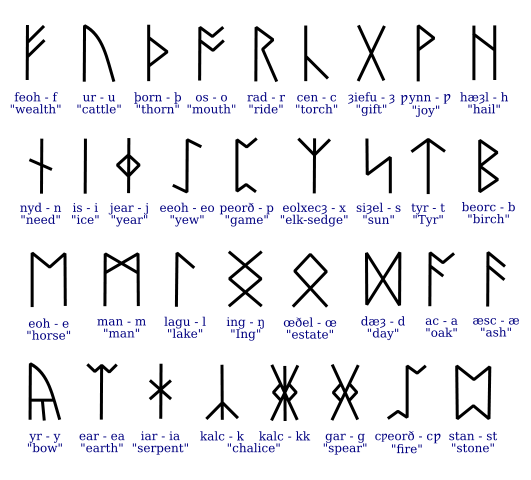
|
Anglo-Saxon runes were used to write Anglo-Saxon before roman letters. |
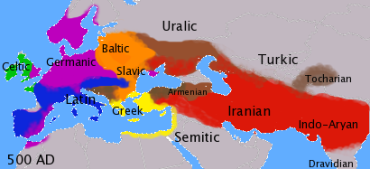
|
A.D. 500 -- The Angles, Saxons, Jutes, and Frisians have brought their language to England. Their various dialects were West Germanic (a branch of Indo-European). |
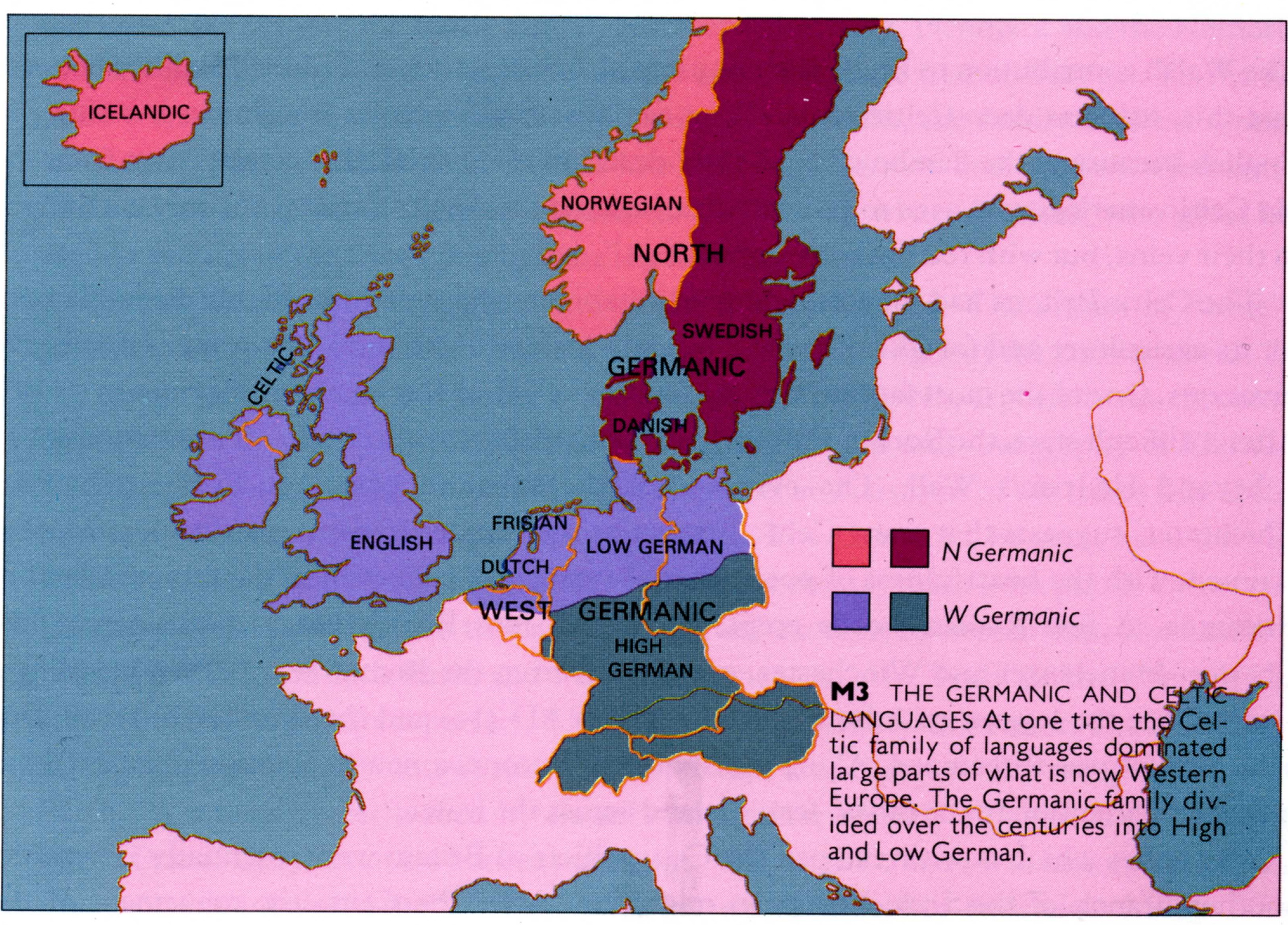
|
Germanic dialect areas. Old English (Anglo-Saxon) was very similar to the Continental varieties of Low German. |
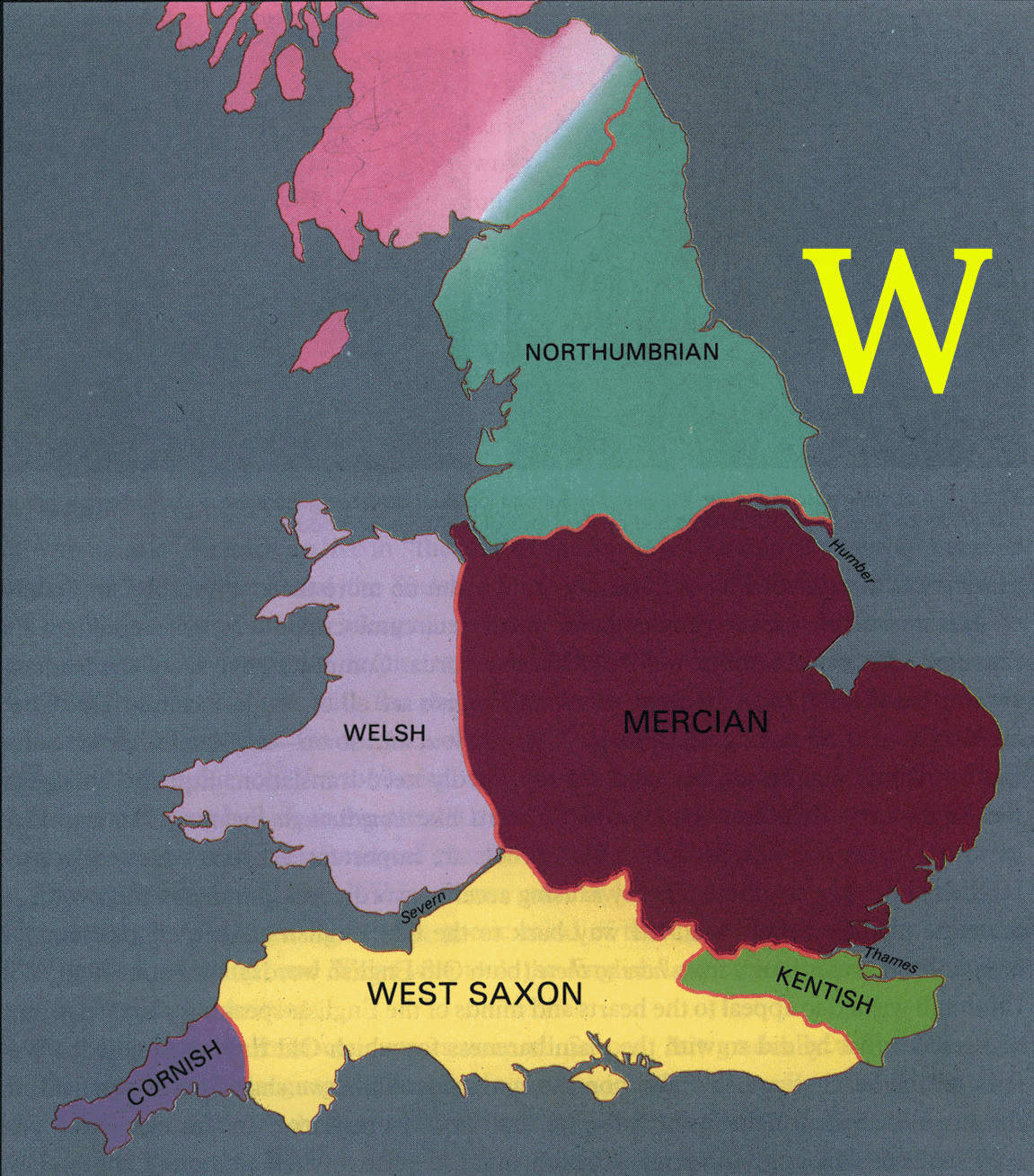
|
At about the time of Alfred the Great, the major Anglo-Saxon dialects are Northumbrian, Mercian, Kentish, and West Saxon. Alfred's dialect is West Saxon, i.e. the "Wessex" dialect. The Anglo-Saxon dialects, especially that of Alfred, are also known as Old English. Welsh and Cornish are Celtic languages. |
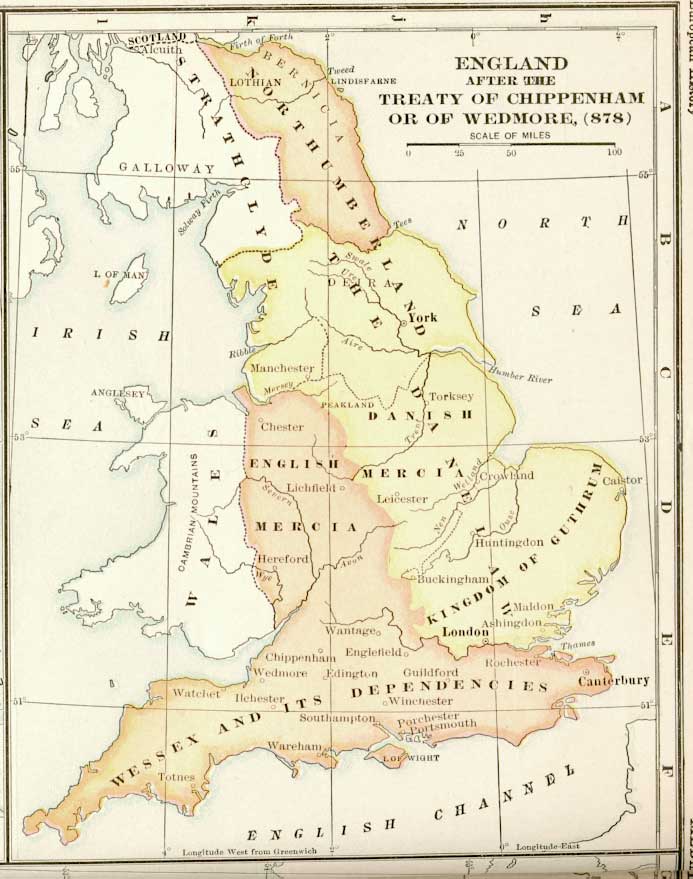
|
Following the peace made between Alfred and Guthrum around A.D. 886, the Vikings settle increasingly in northeast England in the area known as "the Danelaw". |
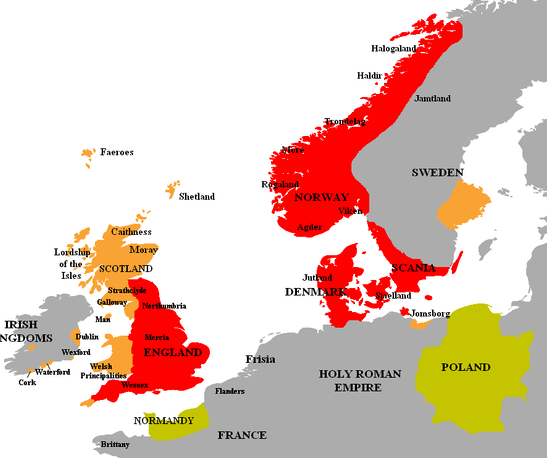
|
Cnut, a Danish Viking, becomes the king of England (including Wessex), Denmark, and Norway. During Cnut's reign (1016-1035), Danes and Anglo-Saxons live in peace throughout England. |
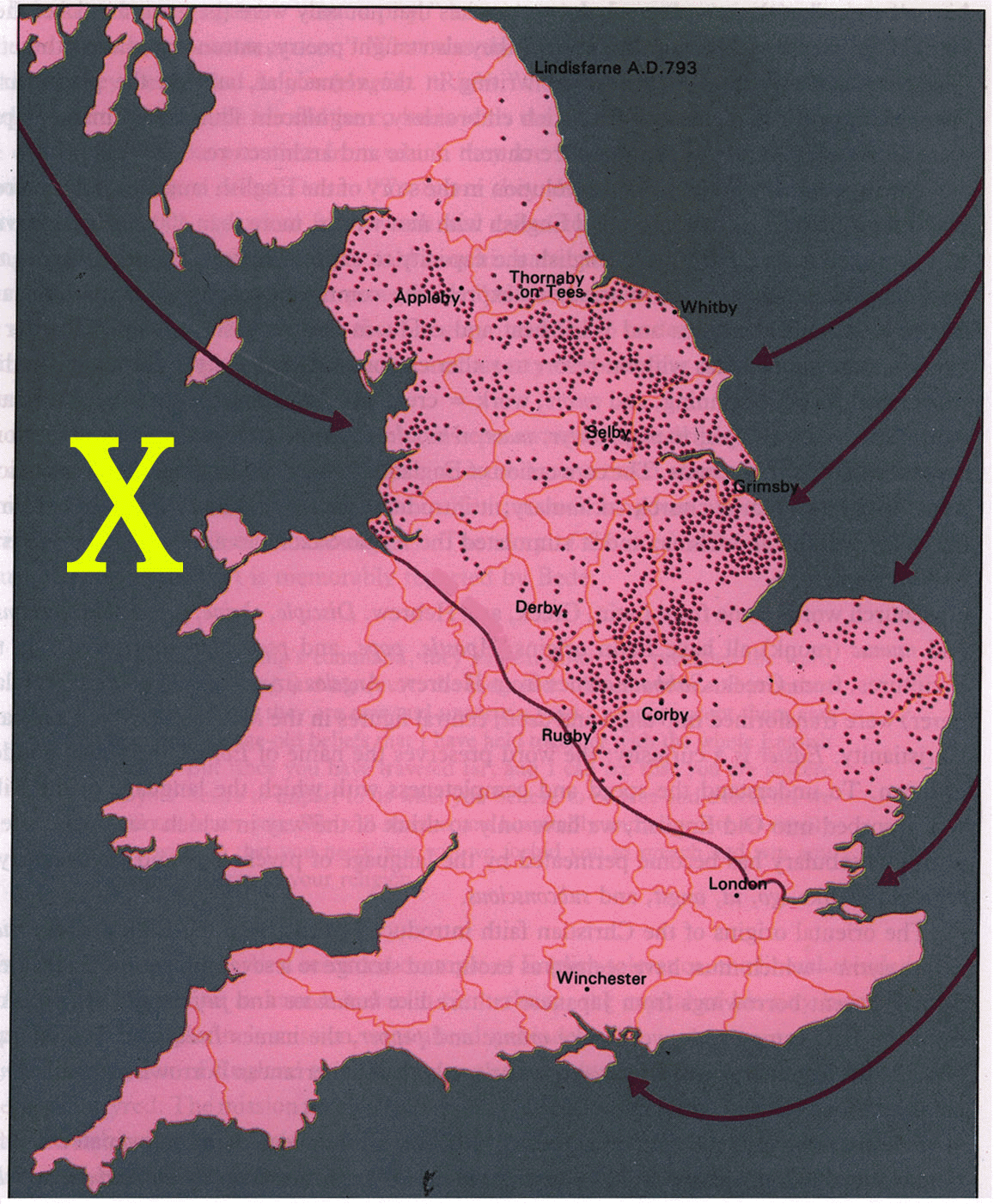
|
The many dots represent modern towns with Old Norse names. Old Norse was the North Germanic language of the Vikings. |
.jpeg)
|
This map of R-ful and R-less pronunciation in modern England reflects old dialect boundaries. |
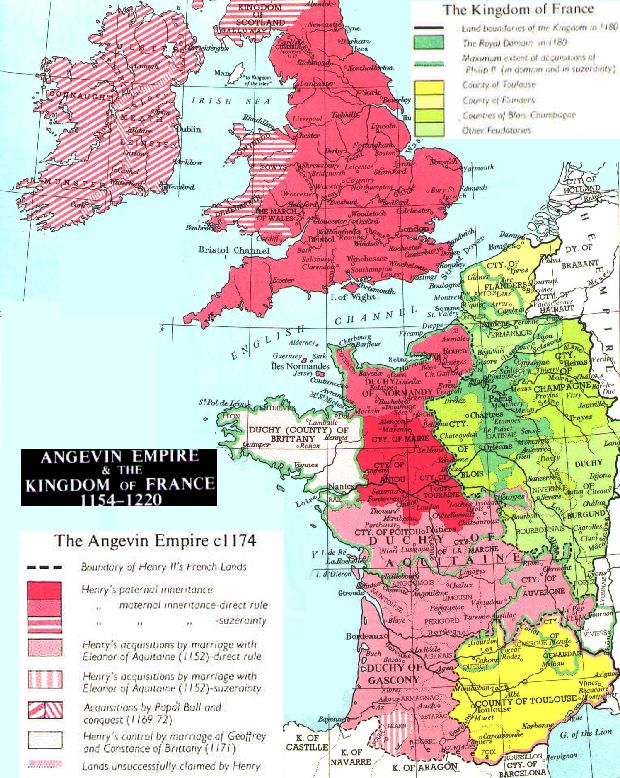
|
England becomes part of the Anglo-Norman "Angevin Empire", at its greatest extent under King Henry II in A.D. 1174. From 1066 until the 1300s, the official language of England is French, although most of the people continue to speak their local dialects of English. By 1155, the Anglo-Saxon Chronicle is no longer written, ao Old English can be considered dead at this time. Though rarely written, spoken English continued to evolve in a period of "Middle English", and Geoffrey Chaucer provides the best examples Middle English literature at the end of the 14th century. |
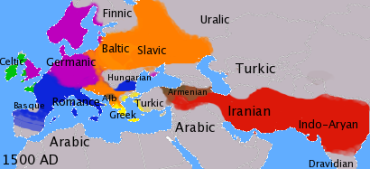
|
A.D. 1500 -- Under the influence of French (a Romance Italic language), Old English has evolved through Middle English and is now Early Modern English (since the 1470s), which is spoken throughout England, including Cornwall and southern Scotland. Though very different from Old English, Middle English and Modern English are nevertheless classified as West Germanic languages. The end of the Early Modern (or Renaissance) English period saw the publications of Shakespeare's plays (1594-1623) and the King James Bible (1604-1611), which are intelligible to Modern English readers. |
last update 7 September 2020